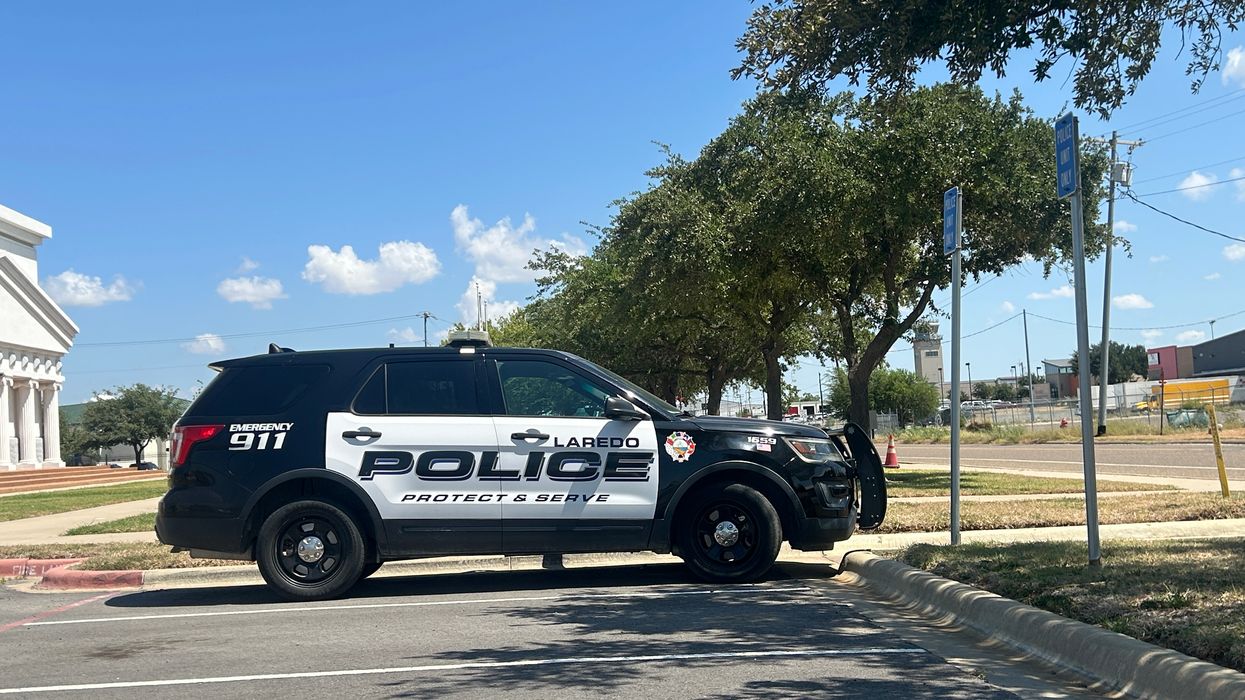LAREDO, Texas — The United States Border Patrol has deployed military Stryker combat tanks along the Rio Grande River in Laredo, Texas. The Laredo Police Department reports that human stash houses — once a common sight during the Biden administration — have largely disappeared. And the Webb County medical examiner reports fewer migrant deaths.
U.S. Customs and Border Protection data show illegal crossings have dropped to a five-year low under President Donald Trump’s mass deportation policies. What’s happening on the ground at the border supports the numbers, and the decline is palpable at Dr. Corinne Stern’s office, as migrant deaths are also falling.
Death at the Border: Crossing Illegally
At the end of a secluded, winding road in Laredo, Texas, sits the Webb County Medical Examiner’s Office. For nearly two decades, Stern has investigated the deaths of immigrants attempting to cross into the United States illegally.
On a hot summer day, less than 24 hours after a woman attempted to cross the U.S.-Mexico border, her body arrived at Stern’s office – the first dead border crosser in weeks.
The Webb County Medical Examiner’s Office has reported a nearly 97% decrease in migrant deaths since 2021, a trend she attributes to Trump's federal anti-immigration policies. Nineteen border crossers have lain on Stern’s autopsy table so far this year.
“Today, we might get a call, it's been maybe once every three weeks,” Stern said. “This year, the numbers just plummeted.”
That’s compared to 77 deaths in her jurisdiction last year – a stark contrast from 2021 at the height of the migrant surge when she recorded nearly 300 deaths.
“We would get multiple calls a week and sometimes multiple calls a day,” Stern recalled.
Webb County is the sixth-largest county in Texas by land, and covering it is no small task. From Stern’s office, it can take more than two hours to reach the furthest point. Her coverage area also spans 10 other counties across hundreds of miles.
June through September are typically the busiest months, as many crossers die from heatstroke on their journey by foot in triple-digit temperatures and desert-like terrain. The woman who lay on Stern’s autopsy table on Aug. 13 was “markedly dehydrated” and died of hyperthermia.
Stern’s job is unique in that a large number of her patients are unauthorized immigrants, many dying from heat stroke or drowning while attempting to cross the Rio Grande River.
“Because I work down here on the border, a great percentage of my patients are those individuals that die in their attempts to cross the border between Mexico and the United States,” she said.
Although many die from hyperthermia, and others drown while attempting to swim across the Rio Grande River, Stern still conducts an autopsy to determine the cause of death correctly. For women, she checks the reproductive organs to see if she was pregnant. If a dead border crosser was carrying a child at the time of her death, authorities could charge the “coyote” (a person who helps smuggle migrants in exchange for payment) with two counts of murder instead of one.
The woman in Stern’s autopsy room was not pregnant.
Life at the Border: Living Among Law Enforcement
The data show a significant drop in illegal immigration, but numbers don’t tell the complete story about Laredo.
With a 95% Hispanic population, the “Gateway City” is 150 miles from the nearest big city, San Antonio.
Known to outsiders as the United States’ largest inland port of entry, with tens of thousands of semi-trucks passing through with cargo daily, Laredo is largely known to its residents as “safe” and “community-oriented.”
Despite the grim realities of migrant deaths, Laredo was named one of the safest U.S. cities last year by WalletHub. Immigration remains a part of daily life here.
“I love life on the border. Laredo is my home,” Stern said. “It’s one of the safest cities in the country, and I think part of the reason is we have so many boots on the ground.”
At any given moment, Border Patrol cars patrol the city roads and station themselves along the river where city parks are also located. Although Laredo residents are all too familiar with seeing Border Patrol vehicles, some say they’ve noticed an increased presence.
The agents are also locals, frequenting business owner Janet Zapata’s pizza shop, 550 Pizzeria, and other spots like coffee shop Borderland Espresso & Gifts.
Zapata said she’s noticed more agents in recent months, though their presence has been a part of daily life for many people’s entire lives in Laredo — a community where immigration is never far from conversation.
“We think about a lot of the changes that are happening, that are going to happen,” Zapata said.
One of the more noticeable changes is the installation of a military Stryker parked underneath the pedestrian bridge that connects Laredo to its sister city, Nuevo Laredo, Mexico. The armored vehicle sits steps from the Rio Grande River and a city park.
Laredo Border Patrol Chief Jesse Muñoz said there is no militarization of the border, but instead, the vehicle is there in a “supportive role.”
“When I think of military militarization, you think they're coming to do military operations or military things on the border, and that's not the case,” Muñoz said. “They're here to help with border security.”
Public Information Officer Joe Baeza with the Laredo Police Department said this level of enforcement is more than what they’ve seen before.
However, Border Patrol emphasized that this is not a militarization of the border.
“I think we sent a message, and you know one thing is, I don't think the Border Patrol is anti-immigrants or anti-migration. We're anti-illegal immigration,” sector Chief Muñoz said.
Ashley N. Soriano is a bilingual multimedia journalist covering politics and immigration.




















